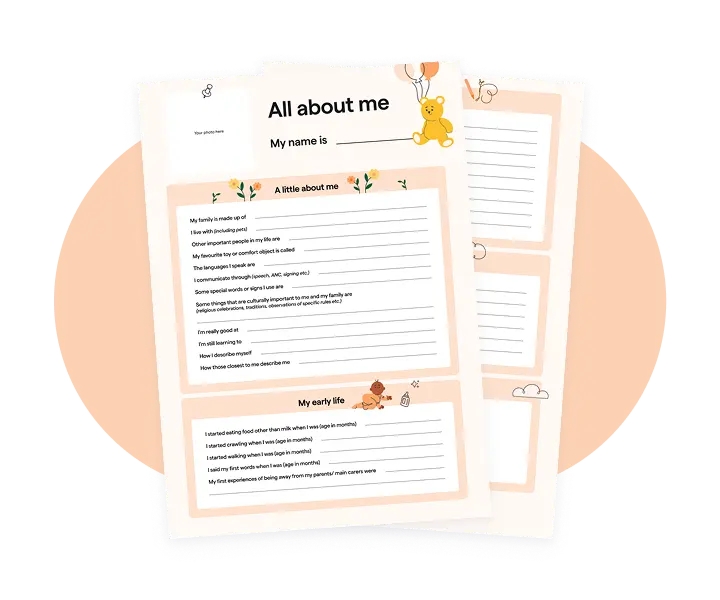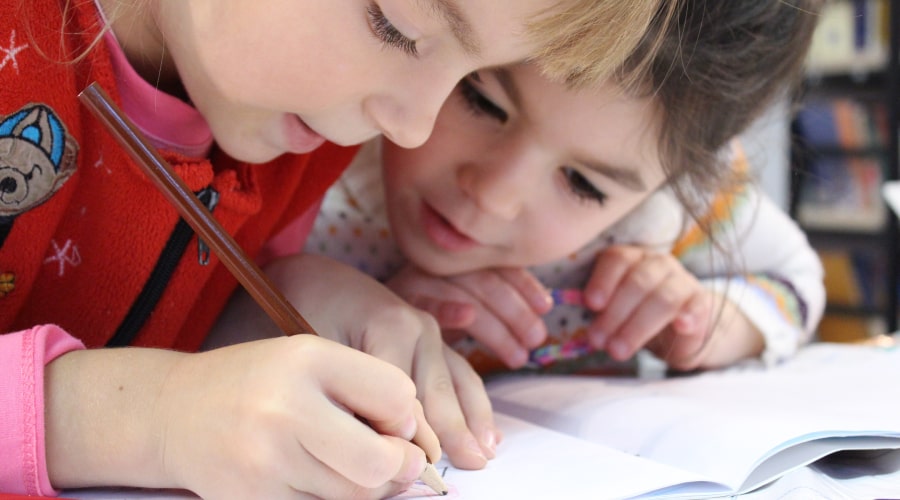settings
children
With Famly since
When you were little, you probably remember grown-ups telling you to “sit still.”
We learn from an early age that wiggly legs and fidgety fingers are a problem. But that two-word command to “sit still” invites a conversation about what good listening looks like in the first place. Does a room full of silent, motionless toddlers really sound like anyone’s ideal learning environment?
Maybe it’s time we rethink those wiggles. What do they mean, and how should you respond to them as an educator? What can you do to help each child learn in the ways that work best for them?
If you ask Dr. Mine Conkbayir, you can start by removing “sit still” from your vocabulary.
“I’ve always been a leg shaker, a fidgeter and a gum chewer. I would never try to curb that behaviour,” she says. “Fidgeting and wiggling is children’s way of showing you that they need a bit of help focusing. Asking them to quit is like asking them to quit breathing. It’s how they self-regulate.”
Mine is an early education consultant, researcher, and author. And as a specialist in children’s self-regulation, she believes we’ve got some misunderstandings when it comes to children’s wiggles, wobbles and fidgets.
So today, we’ll look at the why behind the wiggle — and what you can do as an educator to understand and best support children’s active impulses.
How fidgeting helps children focus
To explore this issue, we’ve got to hop out of our grown-up brains for a moment. Once you do that, you’ll remember that it’s really, really hard to just “sit still” when you’re three years old.
Young children are brimming with energy. They’ve got to deal with the constant stimulation of discovering the world, and they process that with a kaleidoscopic imagination, fuelled by chocolate milk and grapes. Keeping a lid on all that can be tough sometimes.
“We were children once, too. We’ve got to remember what it was like to sit with your legs crossed, arms folded, and getting reprimanded if you don’t,” Mine says. Sitting quietly is hard work for young children. They’ve got to draw on their developing self-regulation skills in order to regulate their impulses, and to recognise and express their needs.
And when that gets tough, it can help to wiggle your legs, zip the zipper on your jacket, or fidget with the Velcro on your sneakers.
“When children are feeling a bit wobbly or wiggly inside, fidgeting can help them stay in the moment, both cognitively and physically. So they fidget to focus, not because they’re messing around, or pushing your buttons,” Mine explains.
It’s common to interpret fidgeting as a sign that children lack self-control, or that they’re unfocused. But Mine emphasises that it’s just the opposite.

“Self-regulation skills are what enable a child to exercise self-control. So when you see wiggling and fidgeting, that’s a sign that children are trying to gain some self-regulation, so they can focus and be present for your learning experience.”
Dr. Mine Conkbayir
The big ideas

What causes fidgeting in children?
It’s not worth analysing fidgeting on an individual level. Instead, it’s better to adjust your environment, policy and practice to give children more healthy outlets for their wiggles.
As Mine points out, there are any number of good reasons behind fidgeting. Maybe a child just had a lot of juice during breakfast, or they’re excited about an upcoming birthday. Or maybe they witnessed something traumatic at home, and are feeling anxious because of that.
Digging too deep into these can drive us to overanalyse children, and to lose track of the fact that fidgeting is a normal thing for children to do in the first place. What you should do, however, is look for ways that your learning space can better support children’s active impulses.
You might ask yourself the following questions, to help get an idea of what you might change:
- Are children sitting down for too long in one stretch? Mine recommends a maximum of 15 to 20 minutes of sitting still for young children, before it’s time to change the pace.
- Is a lot of your day based on sedentary activities? Could any of these be more active, or allow children to stand or move how they like?
- Are there loads of desks and tables in your space, making it tough for children to run and move about?
- Is your environment cramped, too bright, or visually overstimulating for children?
- Does your daily schedule create some limits on when children can move?
- Do you have scheduled movement breaks, to offer children something structured, active and engaging?
If you’re answering “yes” to a lot of these questions, that’s a sign that you might need some more brain breaks.
Do you have enough brain breaks in your day?
When you notice a lot of wiggling, the best thing to do is to give children a productive outlet for those active impulses. Take a few minutes to get up, shift positions, and move around a little.
In other words, take a brain break.
You’ll find decades of research showing how getting up and active is a key ingredient in children’s health, happiness and learning. And young children tend to be active in small, spontaneous bursts — which is why shorter, regular brain breaks can work better than a long, structured activity period. Even a few minutes' break can make a big difference.
Here are four ways Mine recommends to get up and active, and help children burn off that excess energy.
- Try some yoga. Run through a couple simple yoga poses as a group. It’s okay if your form isn’t perfect — it’s the moving around that counts.
- Move to music. Throw on a favorite song and have a little dance, or sing a song together! Here are 10 easy music activities to try. And you might want to read this if you feel shy about singing.
- Ditch the chairs. Try doing your next activity without your usual seating. Instead, give everyone the freedom to stand, squad, lay on their belly, or lean against a wall as you play and learn.
- Get outside and play. Even if it’s just for 10 minutes, a quick romp in the garden does wonders to get those wiggles out of your system. If you feel like your setting doesn’t have much outdoor space, Sue Cowley’s got some tips on how to create one anywhere.

We’ve got to give more trust to children
On some level, our response to children’s fidgeting speaks to how much we trust children.
In the command for children to “sit still,” there’s a baked-in assumption that we know children’s own needs and impulses better than they do. Giving children more breaks, and more freedom to move and engage in the way that suits them best, is a gesture of trust. It shows we trust children to lead their own learning, and to shape the conditions that make them most comfortable to learn.
If you fixate on whether children are sitting still, you can get too caught up in whether they’re obeying, and lose track of whether they’re really engaged with what your learning. When you notice fidgeting, Mine says, it’s worth asking: is this really causing trouble, distractions, or interruptions?
“Who’s to say that learning looks one way or another, or that you’ve got to conform to a one-size-fits-all idea of attentive listening?” she asks. “When we ask children to stamp out these self-regulatory behaviors, we’re setting them up to fail.”
So if you feel that urge to tell a fidgeting child to “sit still,” it’s worth pausing, and asking if that’s really the only way for children to learn. If you’re willing to lend a little more trust to children, you’ll soon see a much bigger picture of what engaged learning looks like.
“It’s okay to relinquish control as an adult. You don’t need every child to sit down, arms folded, legs crossed,” Mine says. “Children are not robots! You need to give them freedom. The more you give them, the more they’ll get out of their learning experiences.”
Get 1000s of free EY activities
Want over 7,000 activities? See them in a free 14-day trial. Filter to target learning areas, age groups and topics, and get inspired.
Get started









